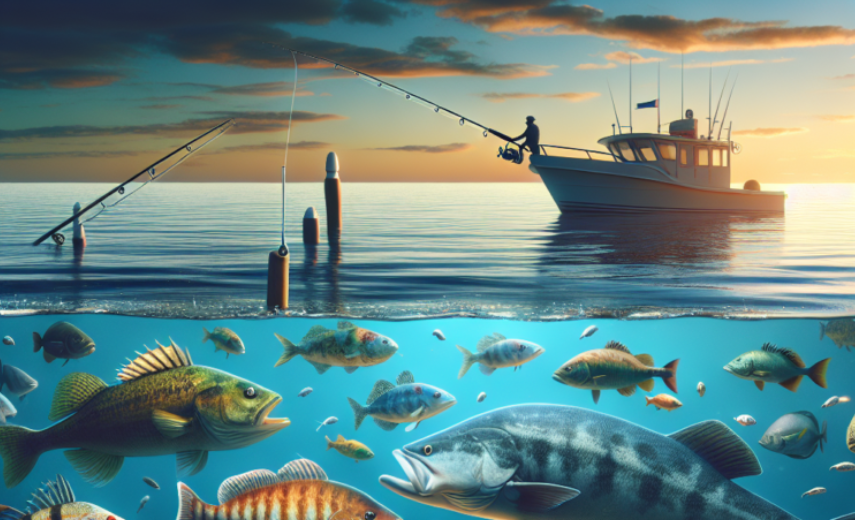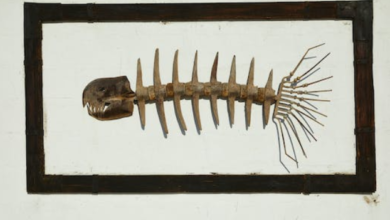Introduction
Fishing in Texas is a popular pastime, and the state offers a diverse range of saltwater fishing opportunities. However, it’s important for anglers to be aware of the regulations and limits in place to ensure the sustainability of fish populations and the preservation of our marine ecosystems. In this comprehensive guide, we will delve into the saltwater fish limits in Texas, providing anglers with all the essential information they need to know before heading out on their next fishing adventure.
1. Understanding Saltwater Fishing Regulations
As responsible anglers, it is crucial to have a good understanding of the saltwater fishing regulations in Texas. These regulations are in place to protect fish populations, maintain the balance of marine ecosystems, and provide equitable opportunities for all anglers. Familiarizing yourself with these regulations will help ensure compliance and contribute to the long-term sustainability of our saltwater fisheries.
2. Fishing Licenses and Permits
Before you embark on your fishing expedition in Texas, make sure you have the necessary licenses and permits. The Texas Parks and Wildlife Department (TPWD) requires all anglers aged 17 and older to possess a valid fishing license. Additionally, if you plan to fish from a boat, you may need a saltwater fishing endorsement. It’s essential to check the TPWD website for the most up-to-date information on license requirements.
3. Bag and Possession Limits
Bag and possession limits refer to the number of fish an angler can catch and keep in a single day or possess at any given time. These limits are in place to prevent overfishing and ensure the sustainability of fish populations. In Texas, bag and possession limits vary depending on the species of fish. Let’s take a closer look at some of the commonly targeted saltwater fish and their corresponding limits:
3.1 Red Drum (Redfish)
Red drum, also known as redfish, is a prized saltwater game fish in Texas. Anglers are allowed to keep a certain number of red drum per day, with a slot limit in place to protect breeding-sized fish. Currently, the bag and possession limits for red drum are as follows:
– Slot Limit: Between 20 and 28 inches
– Bag Limit: Three fish per person per day
3.2 Speckled Trout
Speckled trout, or spotted seatrout, is another highly sought-after species among Texas anglers. To ensure the sustainability of this fishery, regulations are in place regarding the size and number of speckled trout that can be kept. The current bag and possession limits for speckled trout are as follows:
– Minimum Size Limit: 15 inches
– Bag Limit: Five fish per person per day
3.3 Flounder
Flounder is a flatfish species that attracts many anglers due to its unique appearance and delicious taste. To maintain healthy flounder populations, Texas has specific regulations in place. The bag and possession limits for flounder are as follows:
– Minimum Size Limit: 14 inches
– Bag Limit: Five fish per person per day during open season
4. Size and Seasonal Restrictions
In addition to bag and possession limits, certain saltwater fish in Texas have size and seasonal restrictions. These restrictions are crucial to protect fish during their spawning seasons and allow them to reach maturity before being harvested. It’s important to be aware of these restrictions to avoid any unintentional violations. Let’s explore some of the notable size and seasonal restrictions for popular saltwater fish in Texas:
4.1 Red Snapper
Red snapper is a prized fish known for its vibrant color and delicious taste. Due to its popularity and historical overfishing, red snapper has specific regulations to aid in its recovery. The current regulations for red snapper include:
– Minimum Size Limit: 16 inches
– Seasonal Restrictions: The red snapper season is subject to change each year, so it’s crucial to check the TPWD website for the latest information.
4.2 Black Drum
Black drum is a common saltwater fish found in Texas coastal waters. To protect larger individuals and ensure the sustainability of the species, Texas has implemented size restrictions for black drum. The current regulations for black drum are as follows:
– Maximum Size Limit: 30 inches to 52 inches, depending on the region
5. Additional Regulations and Restrictions
Aside from bag and possession limits, size restrictions, and seasonal regulations, there are various additional regulations and restrictions that anglers must adhere to. These regulations may include gear restrictions, catch-and-release requirements, and specific area closures. It is essential to stay up to date with the TPWD regulations to ensure compliance and contribute to the conservation of our saltwater resources.
6. Best Practices for Responsible Fishing
As anglers, it is our duty to practice responsible fishing to protect our marine ecosystems for future generations. Here are some best practices to keep in mind when saltwater fishing in Texas:
– Practice catch and release whenever possible, especially for larger breeding-sized fish.
– Handle fish with care to minimize stress and potential injuries.
– Use circle hooks to reduce the likelihood of deep hooking and increase survival rates.
– Dispose of any trash or fishing lines properly to prevent entanglement of marine life.
– Respect protected areas and avoid fishing in designated no-fishing zones.
Conclusion
Texas offers abundant saltwater fishing opportunities, but it is crucial for anglers to understand and follow the regulations in place. By adhering to bag and possession limits, size restrictions, and seasonal regulations, anglers can contribute to the conservation and sustainability of our saltwater fish populations. So, before you cast your line, familiarize yourself with the regulations, obtain the necessary licenses, and practice responsible fishing to ensure the future enjoyment of these resources.
FAQ Section
Q1: What is the penalty for violating saltwater fishing regulations in Texas?
Anglers who violate saltwater fishing regulations in Texas may face fines, license suspensions, and even criminal charges, depending on the severity of the violation. It is essential to familiarize yourself with the regulations and adhere to them to avoid any penalties.
Q2: Can I fish without a license in Texas if I am only catch-and-release fishing?
No, a fishing license is required in Texas, even for catch-and-release fishing. The license fees contribute to the conservation and management of our fisheries, ensuring their sustainability for future generations.
Q3: Are there any restrictions on using certain types of fishing gear in Texas?
Yes, Texas has specific gear restrictions for certain species and areas. For example, the use of gill nets and trawling gear is prohibited in some areas to protect sensitive habitats and non-target species. It’s essential to check the TPWD regulations to ensure you are using legal gear.
Q4: Can I donate fish that exceed the bag and possession limits to charity?
Yes, anglers in Texas can donate fish that exceed the bag and possession limits to a charitable organization. However, it is important to follow the guidelines set by the TPWD and the organization receiving the donation.
Q5: Where can I find the most up-to-date information on saltwater fishing regulations in Texas?
The Texas Parks and Wildlife Department (TPWD) website is the best source for up-to-date information on saltwater fishing regulations in Texas. They regularly update the regulations to reflect changes in fish populations and management strategies.




